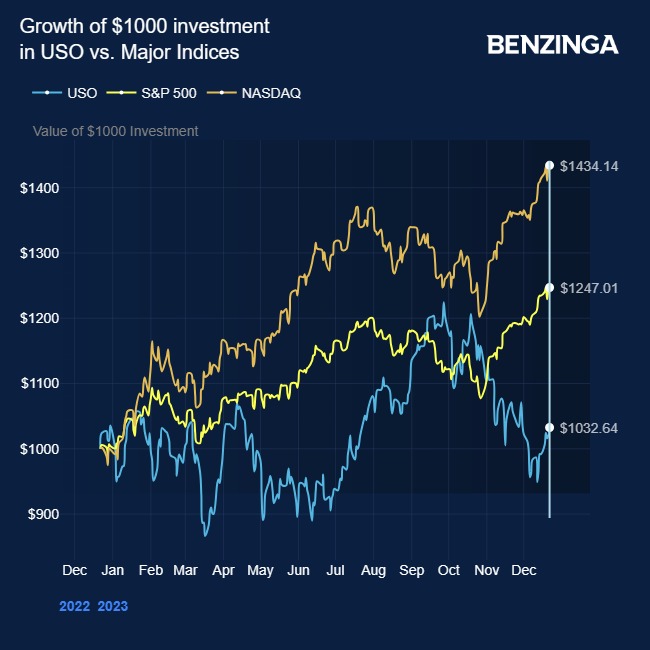Zinger Key Points
- The oil gains come after seven straight weeks of losses.
- Suspension of shipping through Red Sea causes delays, higher costs.
- Feel unsure about the market’s next move? Copy trade alerts from Matt Maley—a Wall Street veteran who consistently finds profits in volatile markets. Claim your 7-day free trial now.
Oil prices were set for a second straight week of gains on Friday as Red Sea tensions persisted following a series of attacks on commercial shipping in the region by Yemeni Houthi rebels.
In early trade on Friday, the U.S. benchmark oil futures contract Nymex WTI was up 1.1% at $74.68 per barrel, setting it up for a weekly gain of 4.6%. European benchmark Brent crude was up 1% on Friday at $80.18 per barrel, up 4.7% on the week.
The United States Oil Fund USO, an exchange traded fund that tracks the price of light-sweet crude, was up 0.9% at $69.68 on the day and up 2.8% over the week.

Also Read: Oil Prices Fall After Angola Says It Will Quit OPEC
Shipments Suspended Through Red Sea
Many freight companies have suspended shipments through the Red Sea/Suez Canal corridor, which is a vital trade route for goods being shipped from Asia to Europe and Eastern ports in the U.S.
British oil major BP BP was among the companies to announce this week that it was temporarily halting shipments via the route despite the increased presence of international naval warships in the area.
Instead, goods and commodities are being shipped around the Cape of Africa, a route that adds thousands of miles and up to two weeks in delays for shipments.
“Companies have started avoiding the Red Sea and this already leads to significant delays in supply chains and prices hikes on the spot market — and it could still get worse,” said Rico Luman, senior sector economist at ING.
“The trade lane is a vital corridor to ship oil and oil products from the Persian Gulf to Europe and the US. Re-routing around the Cape adds some 3,000-3,500 nautical miles,” he added.
The Last Word: The gains for oil prices over the past two weeks will be a welcome relief for oil bulls who watched the price of crude fall sharply during the preceding seven weeks.
The US Oil Fund ETF’s 2023 peak was in late September at $83.29 and, despite the last two weeks of gains, it remains 16% lower than the September peak.
Now Read: Is The Santa Rally Over? What It Means For Stocks In 2024
Photo via Shutterstock.
Edge Rankings
Price Trend
© 2025 Benzinga.com. Benzinga does not provide investment advice. All rights reserved.
Trade confidently with insights and alerts from analyst ratings, free reports and breaking news that affects the stocks you care about.